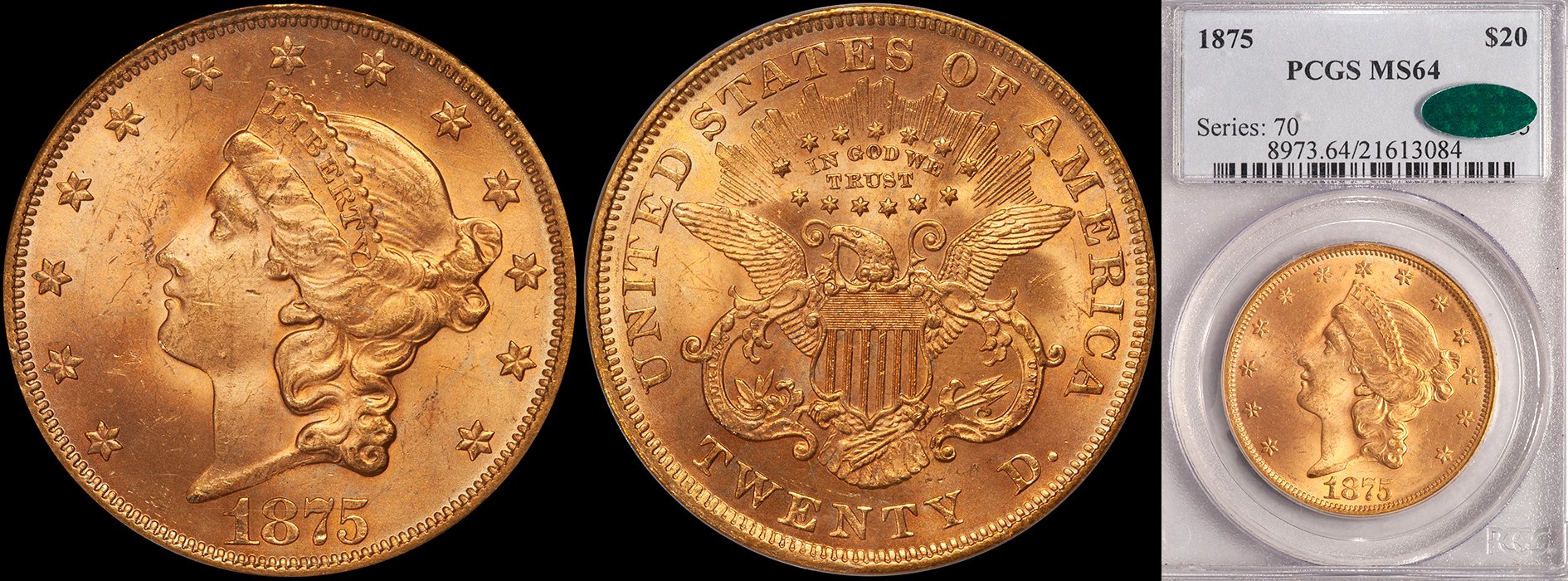A few years ago, I wrote a blog about coin books that needed to be written for United States gold coin collectors. A few of what I considered to be the gaping holes in gold coin literature have been filled but others remain. Here, again, are some of my “dream books” and the reasons why I think they would be important.
1. A Collector’s Guide to Classic Head gold coinage. It’s been rumored for years that John McCloskey was going to be producing a book on this subject and I have seen references to his die variety numbering system as far back as the Bass II catalog from 1999. But there is still no collector’s guide to this series.
I personally think that Classic Head gold coinage is one of the most collector-friendly series. The quarter eagles and half eagles from 1834 to 1838 have a charming design, are very short-lived and lack the extreme rarities (and ultra-expensive issues) found in the Liberty Head series. And, as Dr. McCloskey has shown, there are a number of extremely interesting naked-eye varieties.
A few of the topics that I’d really liked to see covered in a future Classic Head book would include die characteristics of Proofs (it can be extremely difficult to tell a true Proof from a Prooflike business strike), a detailed history behind the establishment and abolishment of this design (this period in American coinage history remains under-researched and not well understood), a detailed explanation as to why these coins tend to show poor strikes and a date-by-date analysis as to the rarity and collectability of the Classic Head quarter eagles and half eagles.
This wouldn’t be a very long book (I’m guessing 125-150 pages tops) and it probably wouldn’t be a best-seller but it would stimulate what I think is one of the most interesting United States gold coin series.
2. An Encyclopedia of Proof Gold Coinage. The knowledge that most collectors have about Proof gold is sketchy at best. The Breen Encyclopedia and the Akers books contain population estimates about many Proof gold issues but the numbers are typically at odds with each other.
Here’s what I’d like the definitive book on Proof gold to contain. First, I’d like pictures of all the known Proof issues. Secondly, I’d like diagnostic criteria for all proof gold coins. Thirdly, I’d like Condition Census information (where possible). Fourth, I’d like an explanation of the manufacturing process of Proof gold and some detailed information on things like why Three Dollar gold pieces tend to show intense orange-peel texture or why certain issues come with heavy cameo contrast and others do not and to mention, once and for all, accurate information on the Matte Proof manufacturing process.
The problem with such a book is that it would be very expensive to produce (especially with attractive pictures) and I can’t imagine more than a few hundred copies would ever be sold.
3. A high quality “coffee table” book about collecting United States gold coins by type. This topic has sort of been covered by the Garrett/Guth gold coin book and the new book on gold coin collecting by type written by Jeff Ambio. What I’d like to see is a book that takes the design and the scope of the former and weds it with the depth and clarity of the latter.
As more and more new collectors decide to focus on gold coin collecting by type, I think the importance of producing a well-written, easy to use and superbly illustrated book on every major United States gold type becomes more and more critical.
I’d like this book to have information about the how’s and why’s of type collecting, suggestions of what dates work best for type collecting, etc. I’d also like to see really good color photos of every major design type.
This is a book that I can actually see selling quite a few copies and I could imagine the format being spun-off to encompass silver and copper as well.
4. A book on San Francisco gold coinage. If you think about it, there is no real reason for San Francisco gold being less popular than the Southern branch mints other than the fact that there is (currently) no standard reference available to collectors. It has been proven, time and time again, that previously unpopular areas of the market invariably get a shot in the arm when a good book is published.
The reason that I have never written a book about San Francisco gold coins isn’t that I don’t care about the subject; I actually like San Francisco gold quite a lot. My biggest drawback has always been the fact that there are an awful lot of individual issues from this mint and that many of the post-1880 coins just aren’t all that interesting.
If I could ever find the right person to help me with this project, I would consider getting involved.
5. An in-depth collector’s guide to early gold coinage. The recent Dannreuther book on early gold is a fantastic reference for advanced collectors and for collectors who are focused on die varieties. But it lacks basic information for newer collectors that I’d like to see in a book on early gold coinage.
I’d like to see this book in a similar format to the one that I use for branch mint gold, with information about strike, surfaces, luster, color and eye appeal for each issue as well as important die characteristics, rudimentary die variety information, auction price information, a roster of finest known coins, etc.
And I know exactly the right person to write this book. So if you are reading this blog, Paul Nugget, write the book on early gold that could be your legacy and prove to everyone (other than me who already knows it...) that you are the world’s greatest expert on early gold!











